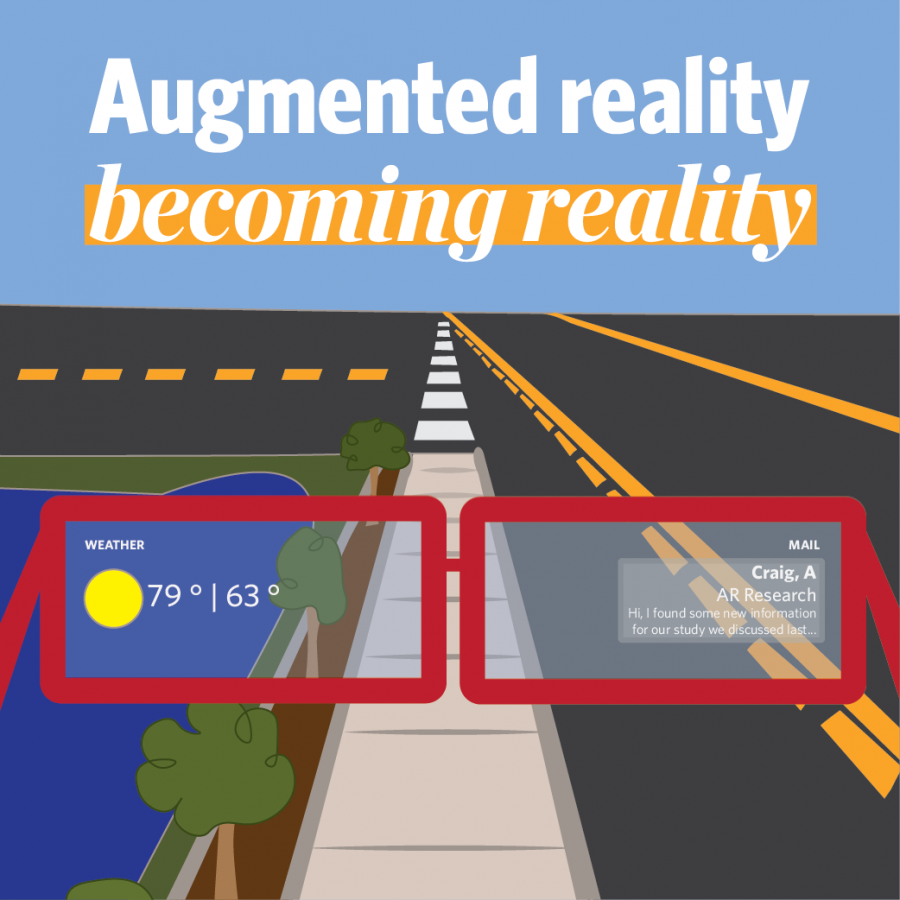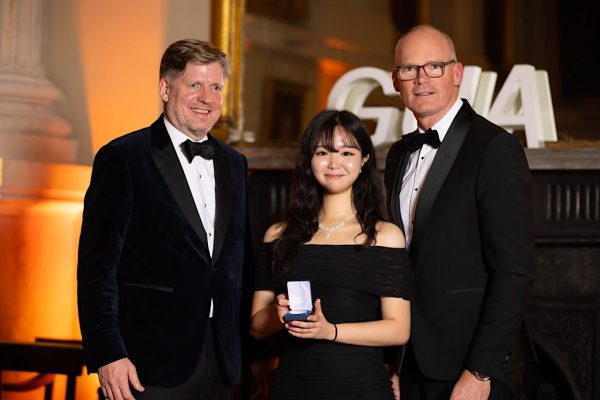Futurists find home at Illinois
Apr 20, 2017
H.G. Wells was a writer obsessed with the future; he wrote books and essays drafting out his ideas for what reality was, what it wasn’t and what it one day could be.
Alan Craig is a man you can tell spends most his time in a different reality than the rest of us. He writes books and essays drafting out his ideas for what augmented reality is, what it isn’t and what it one day could be. While both men work with the future—right now, in the present—they find themselves right here at Illinois.
Alongside being home to an unlucky football team, Illinois is considered the H.G. Wells capital of the world. The Rare Book and Manuscript Library is home to various exhibits of the late author’s work, made up of books, essays, artwork and memorabilia of all things Wells.
Collected by the library over the last 60 years, the University never intended to become the H.G. Wells’ cornerstone of the world. In fact, Wells’ work was merely an afterthought during a professor’s sabbatical. Gordon Ray, a professor in the English department in 1953, was writing a book on William Makepeace Thackeray when he happened to charm the right book seller in England and then, long story short, he ended up securing a $40,000 H.G. Wells’ collection in the process.
Some key pieces of the story may have been lost to history. The library is equally unsure how it actually happened.
Get The Daily Illini in your inbox!
But they are happy it did. The collection attracts scholars from all around the world: anyone interested in Wells, his work, and his vision of the future. Throughout Wells’ work he predicted so much of the technology we have today. He also predicted the thing we would need the most: compassion. More so than any of his contemporaries, Wells put human rights and equality in the forefront of his work. He wanted to see a world that had come together to prevent the disasters he created as the villains of his books. All in all, he saw a future very different, yet very much the same as where we are now. The way he saw it, the future held the key to unlocking what he called “the fourth dimension,” a place that combined images and ideas from our imaginations with the real world around us. That was science fiction in 1895.
In 2016, Wells’ “fourth dimension” is called augmented reality and its coming to a grocery store near you.
“I think science fiction has predicted and influenced the development of virtually everything,” said Alan Craig, augmented reality expert and former research scientist at the National Center for Supercomputing Applications. He is seemingly unaware of the pun he has just made. “[but] in augmented reality, we embrace the real world.”
Augmented reality is the middle of the Venn diagram between virtual reality and real life. Augmented reality programs take computer-made elements and overlay them with the real world, allowing users to utilize and interact with them. Think of it as a visual Siri bringing up the weather, your emails, nd the latest YouTube video: all for you to see as you walk down the street on your way to work.
Craig’s first experience with augmented reality was back before the term was invented in 1985 when Norwegian soft-rock band a-ha released their video for “Take on Me.” The video is one the first uses of augmented reality in mainstream media and features a girl being pulled into a comic book by my mom’s high school crush, Morten Harket.
Since that fateful day, Craig has written three books on the subject of A.R. while working at Illinois and still works with various departments to teach students about the opportunities the tech provides. Recently, augmented reality has become a staple in medical schools to train students without cadavers, while also giving them more in-depth views and breakdowns of organs.
It is far from the romanticized ideas that H.G. Wells had about technology. But learning, Craig said, is at the heart of augmented reality.
“That’s where I’m putting most of my energy and effort. How can we use this idea to help students,” Craig said. He wants to move away from the “flat worlds” students are taught with toward teaching methods that engage your whole attention and body. He envisions students getting to experience walking on the sun or having a conversation with a historical figure like H.G. Wells. He wants nothing more than to see augmented reality become the next tool that redefines communication like the radio did for H.G. Wells’ generation. He is equally afraid of it though, just as H.G. Wells probably was of the radio after the disastrous airing of his novel “War of the Worlds.” He fears the capitalistic aspect of the tech and what it means for day-to-day lives in the future.
“It seems like a lot of the industry side that’s driving the development of V.R. and A.R. are viewing it as a platform for advertising, just like many other mediums are. That’s one of my fears, that as we’re moving through our day in the real world, we’re just assaulted by advertising.”
But he’s wary — not pessimistic.
“Every technology can be used for good or evil … I’m looking for the good.”
Adaption, H.G. Wells stressed, is imperative for growth. Along the same lines, Craig believes that the key to the future of augmented reality is getting over the fear people subconsciously have with the unknown. Augmented reality has the potential to be a valuable tool, in virtually any industry, including the power to change how we tell stories. And stories tend to have a way of influencing the shape of things to come.






